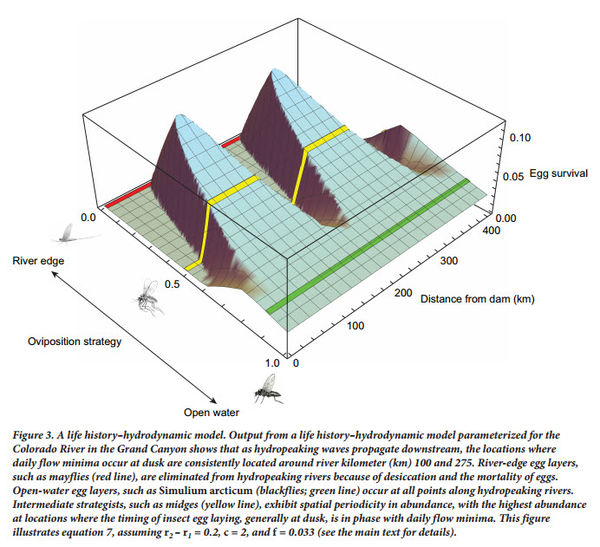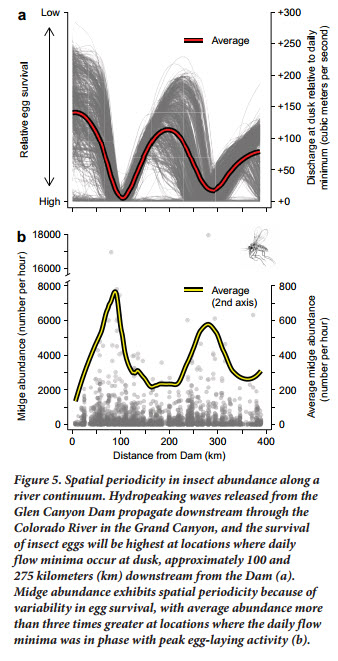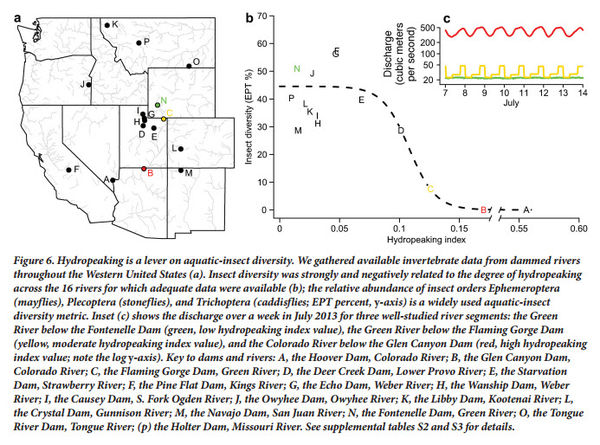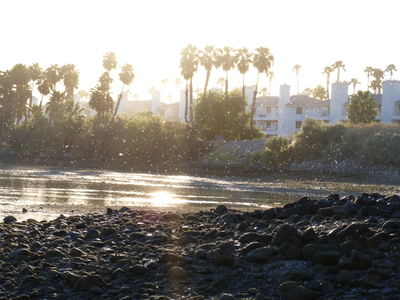Difference between revisions of "'''Oviposition and Egg Desiccation'''"
Cellsworth (Talk | contribs) |
Cellsworth (Talk | contribs) |
||
| Line 78: | Line 78: | ||
|style="color:#000;"| | |style="color:#000;"| | ||
| + | [[File:MacroinvertEggmasses.jpg|center|400px]] | ||
| + | Macroinvertebrate egg masses on the Green River below Flaming Gorge Dam | ||
| + | |||
| + | [[File:P1020356.JPG|center|400px]] <br> | ||
| + | Caddis hatch below Parker Dam. There are several species of EPT below Parker and Davis Dam in spite of daily fluctuations that exceed 6 feet per day. | ||
|} | |} | ||
Revision as of 16:49, 27 March 2017
|
|
Oviposition and Egg Desiccation Studies below Flaming Gorge and Glen Canyon DamsKennedy's 2016 Bioscience paper presents a conceptual model describing how hydropower flows could be limiting aquatic insect diversity and production by limiting the reproductive success of insects accustom to laying their eggs along the shoreline. It provides supporting data from an egg desiccation study done below Flaming Gorge Dam, light trap data collected in the Grand Canyon, and a comparison of fluctuation intensity and EPT diversity in several western US hydropower tailwaters. The paper concludes that egg desiccation from fluctuating flows is likely a leading factor in limiting aquatic insect diversity and production in tailwaters below hydropower facilities. The paper also proposes a bugflow experiment to be tested at Glen Canyon Dam as a possible mitigation for fluctuating flows made for hydropower production. |
| -- |
-- |
-- |
|---|
|
|





